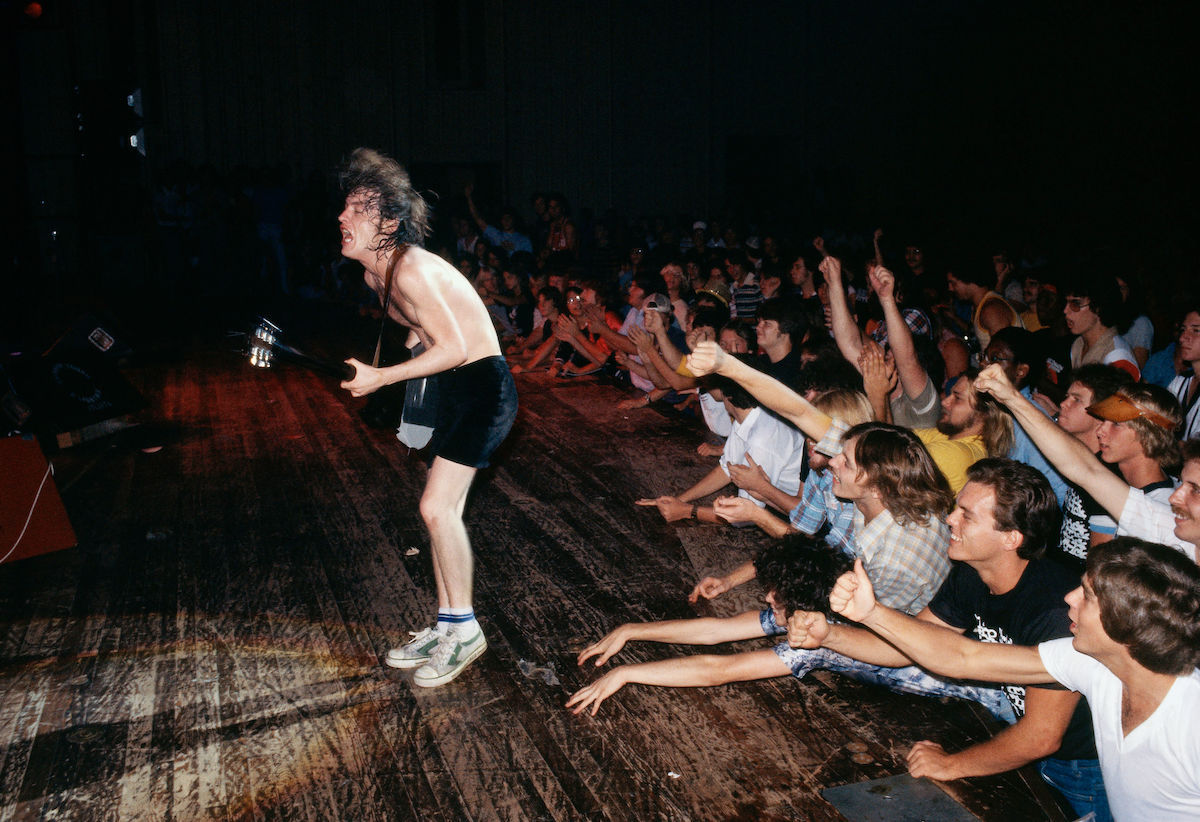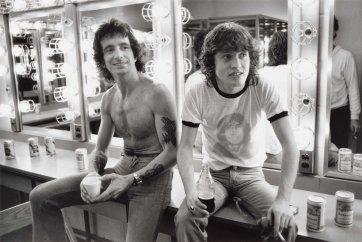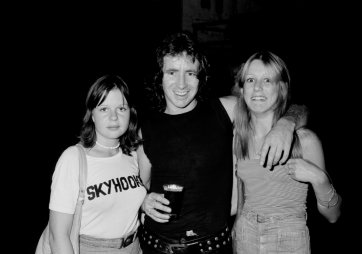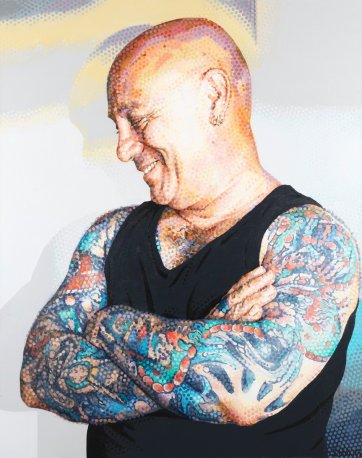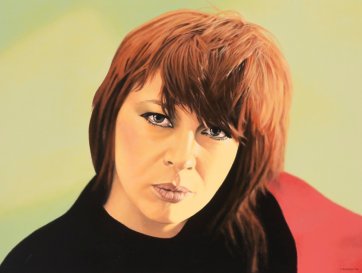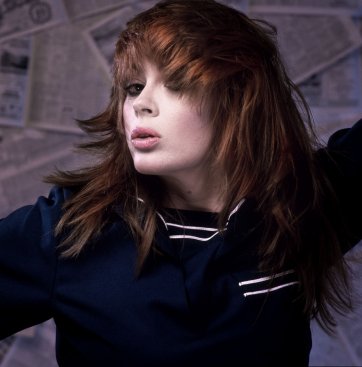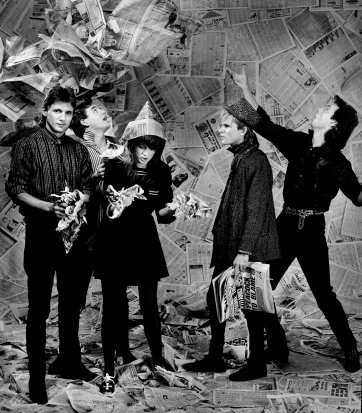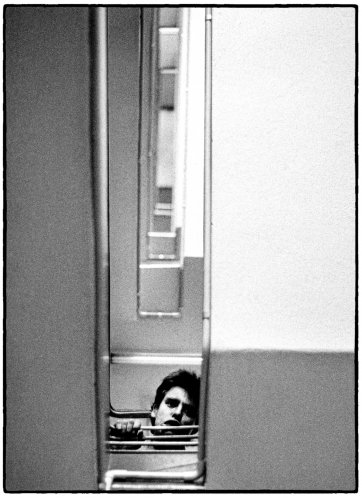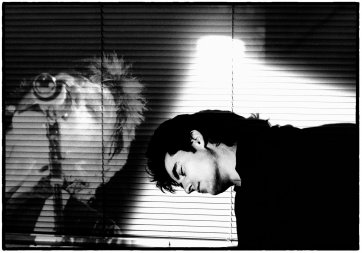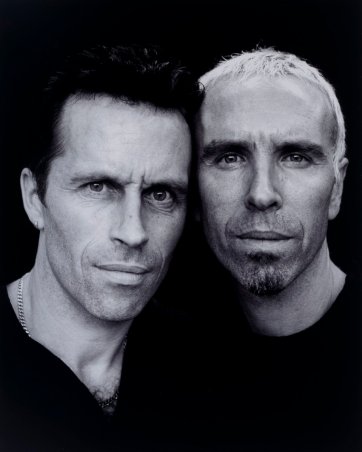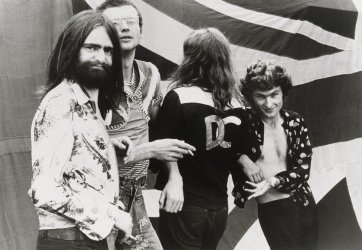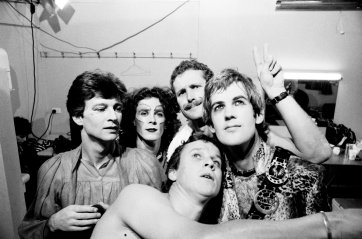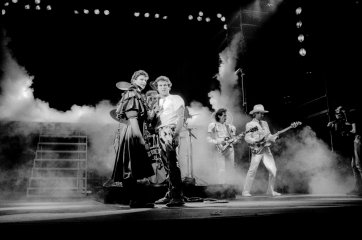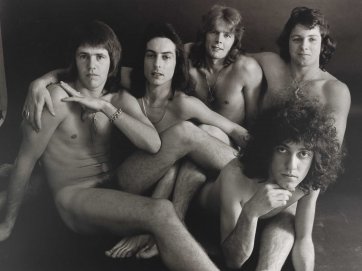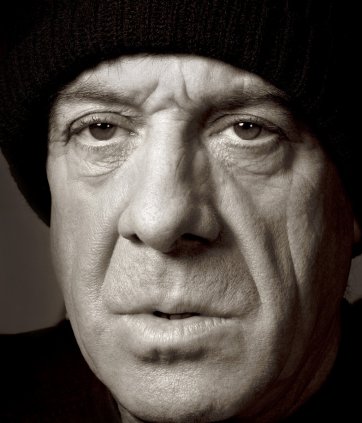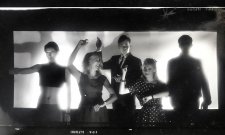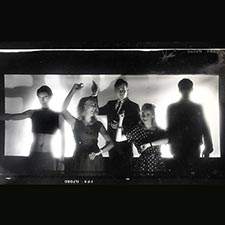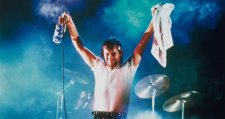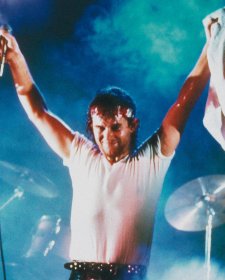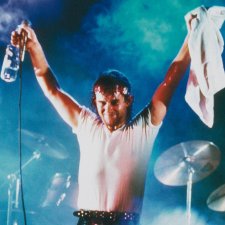Angus Young, AC/DC, LA, 1978 Rennie Ellis. © Rennie Ellis Photographic Archive.
www.RennieEllis.com.au
Two of the music industry’s highest-selling performers originated in suburban Australia. The Bee Gees started out in Brisbane, for instance, and AC/DC – whose Back in Black (1980) has sold more than 50 million copies – played their first gigs at a nightclub in inner Sydney.
1 Bon Scott & Angus Young, Atlanta, Georgia, 1978 (printed 2010) Rennie Ellis. © Rennie Ellis Photographic Archive
www.RennieEllis.com.au. 2 AC/DC, 1977 Bob King. Courtesy of the artist. © Bob King. 3 Malcolm and Angus Young, AC/DC, 1976 Bob King. Courtesy of the artist. © Bob King. 4 Bon Scott, AC/DC with fans, 1977 Bob King. Courtesy of the artist. © Bob King. 5 Dave Tice, 1978 (printed 2018) Gary Ede. © Gary Ede. 6 Angry Anderson, 2006 Sally Robinson. © Sally Robinson. 7 Jimmy Barnes and Ian Moss, Cold Chisel 1980, 1980 Wendy McDougall. Courtesy of the artist. © Wendy McDougall.
Formed by brothers Malcolm and Angus Young in 1973, AC/DC exemplify the brand of pounding, guitar-driven rock that was increasingly thrashed out in suburban pubs and clubs from the early 70s onwards. There was Buffalo, with the ‘demented vocals’ of Dave Tice; The Angels, fronted by the rangy, raucous Doc Neeson; heavily-inked hardmen Rose Tattoo; Cold Chisel, sweaty, wired and boozy; and Divinyls, led by the edgily enigmatic Chrissy Amphlett. Each were among the many bands to have built their styles and followings in venues now considered crucibles of a characteristically local contribution to the genre.
1 Chrissy Amphlett "Temperamental", 1989 Ivan Durrant. © Ivan Durrant/Copyright Agency, 2024. 2 Chrissy Amphlett, Sydney, c.1988, c. 1988 Stuart Spence. Courtesy of the artist. © Stuart Spence. 3 The Divinyls performing on Countdown, n.d. Bob King. Courtesy of the artist. © Bob King. 4 Divinyls, Sydney, c.1988, c.1988 Stuart Spence. Courtesy of the artist. © Stuart Spence. 5 Doc Neeson, The Angels 1982, 1982 Wendy McDougall. Courtesy of the artist. © Wendy McDougall. 6 Doc Neeson, The Angels 1982, 1982 Wendy McDougall. Courtesy of the artist. © Wendy McDougall. 7 Doc Neeson, the Angels 1982, 1982 Wendy McDougall. Courtesy of the artist. © Wendy McDougall.
Despite their surly, insalubrious breeding grounds – and outré rock ‘n’ roll lifestyles – hard rock bands proved more palatable to the local industry than the innovative homegrown exponents of new wave emerging in the same period. AC/DC in particular distanced themselves from punk. ‘We thought that punk and the new wave thing might spoil it a bit for us,’ AC/DC frontman Bon Scott said in 1977, ‘but people ... want more than someone up there screaming “anarchy” and “rape” and this sort of crap, you know, and we’re it’.
1 Mark and Nick Seymour, 1997 Nathan Kelly. © Nathan Kelly. 2 Daddy Cool, Melbourne, 1974 Rennie Ellis. © Rennie Ellis Photographic Archive
www.RennieEllis.com.au. 3 Skyhooks, Hordern Pavilion, 1976 Bob King. © Bob King. 4 Skyhooks, Capitol Theatre, Sydney, 1983 Bob King. © Bob King. 5 Sherbet, 1974 (printed 2002) Lewis Morley. © Lewis Morley Archive LLC. 6 Marcia Hines, c. 1981 Lewis Morley. © Lewis Morley Archive LLC. 7 Adrian Rawlins, 1977 David Campbell. © Estate of David Campbell. 8 Glenn A Baker, 1989 (printed 2018) Gary Ede. © Gary Ede. 9 Molly Meldrum, 2004 Robin Sellick. © Robin Sellick.
"Gettin’ robbed, gettin’ stoned, gettin’ beat up, broken boned" taken from ‘It’s A Long Way To The Top’. Words and music by Ronald Scott, Malcolm Young and Angus Young. © Copyright BMG AM Pty Ltd/Australian Music Corporation Pty Ltd. Used by permission. All rights reserved. Unauthorised reproduction is illegal.
